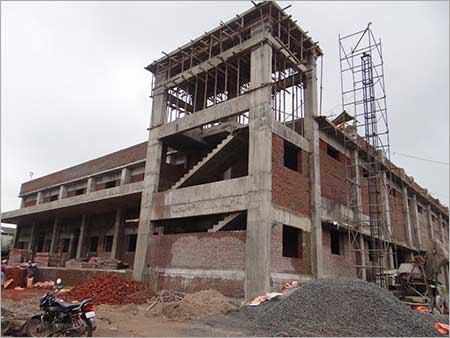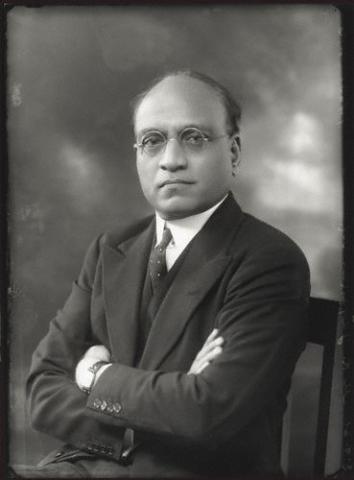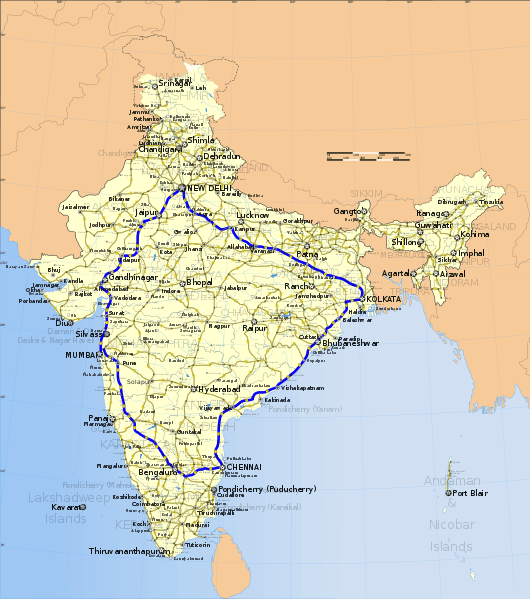Table of Contents
Transportation contributes to the economic, industrial, social and cultural development of any country. Transportation is vital for the economic development of any region since every commodity produced whether it is food, clothing, industrial products or medicine needs transport at all stages from production to distribution. The inadequate transportation facilities retard the process of socio-economic development of the country. The adequacy of the transportation system of a country indicates its economic and social development. Therefore, Development Of Roads In India is very important for its future development. Actually it has been already begun since the development of the country, and need more development in future. In this post, I will discuss the Historical Development Of Roads In India since ancient time.
Road Development in India up to Twentieth Century
Ancient roads
The excavations of Mohenjo-Daro and Harappa have revealed the existence of roads in India as early as 25 to 35 centuries B.C. Old records reveal that in early periods the roads were considered indispensable for administrative and military purposes. At the beginning of the fifth century A.D., emperor Ashoka had improved the roads and provided facilities for travellers.
Roads in the Mughal period
During the Pathan and Mughal periods, the roads of India were greatly improved. Some of the highways either built or maintained by Mughals received great appreciation from the foreign visitors who visited India during those periods. Roads were built running from North-West to the Eastern areas through the Gangetic plains, linking also the coastal and central parts.
(See Also: Transportation Engineering Video Free Tutorials)
Roads in nineteenth-century during British rule
The fall of Mughal Empire led therefore to the scant attention to road transportation. The economic and political shifts caused damage to a great extent in the maintenance of the roads. At the beginning of British rule, the conditions of roads deteriorated. Prior to the introduction of railway tracks connecting some of the locations, a number of trunk roads were metalled and bridges were constructed. This was mainly done on the remains of old roads which existed, under the supervision of the British Military Engineers.
Military maintenance was not quite adequate and in 1865 Lord Dalhousie, when he was Governor-General formed the ‘Public Works Department’ in more or less the same form that exists today. The construction of the Grand Trunk Road was undertaken by this new department. However, with the development of railways during the British regime, the attention of the Government was shifted from road development except for providing feeder roads and the railway was gaining the privileges.
Road Development in India during the Twentieth Century
During the second decade of the 20th century, soon after the First World War the motor vehicles using the roads in India also increased and this demanded better roads. However, the roads that existed then with ‘Water Bound Macadam (WBM)’ surface and other inferior surfaces were not able to withstand the mixed traffic consisting of slow-moving vehicles and the motor vehicles. Due to the combined effect of the mixed traffic movement, the roads deteriorated fast during the post-war period.
Formation of Jayakar Committee
A resolution was passed by both Chambers of the Indian Legislature in the year 1927 for the appointment of a committee to examine and report on the question of road development in India. In response to the resolution, a Road Development Committee was appointed by the Government in 1927, with Mr. M. R. Jayakar as the Chairman.
Jayakar Committee submitted its report by the year 1928. Most of the recommendations of Jayakar Committee were accepted by the government, and the major recommendations were implemented subsequently. The Central Road Fund was formed by the year 1929, the semi-official technical body called the ‘Indian Roads Congress’ was formed in 1934 and the Central Road Research Institute was started in the year 1950.
(Also Read: List of Tests for Bitumen as per Indian Standard)
Central Road Fund
Based on the authority of a resolution adopted by the Indian Legislature, the Central Road Fund (CRF) was formed on 1st March 1929. At that period the consumers of petrol were charged an extra levy of 2.64 paisa per litre (then two Annas per gallon) of petrol to build up this road development fund. 20 per cent of the annual revenue is to be retained as a Central Reserve, from which grants are to be given by the Central Government for meeting expenses on the administration of the road fund, road experiments and research on road and bridge projects of special importance. The balance 80 per cent is to be allotted by the Central Government to-various states based on actual petrol consumption or the levy collected on the sale of petrol. The accounts of the Central Road Fund are maintained by the Accountant General of Central Revenues and the control on the expenditure is exercised by the Roads Wing of Ministry of Transport.
Indian Roads Congress
At the instance of the central government, a semi-official technical body known as Indian Roads Congress (IRC) was formed in 1934. It may be recalled that this was one of the main recommendations made by the Jayakar Committee. The Indian Roads Congress was constituted to provide a forum for regular pooling of experience, technical knowledge and ideas on all matters related to the planning, construction and maintenance of roads in India. The IRC will prepare standard specifications and provide a platform for the expression of professional opinion on matters relating to road engineering including those of organisation and administration. The IRC has played an important role in the formulation of all road development plans in India.
Motor Vehicle Act
In 1939 the Motor Vehicles Act was brought into effect by Government of India to regulate the road traffic in the form of traffic laws, ordinances and regulations. The three phases primarily covered are control of the driver, vehicle ownership and vehicle operation on roads and in the traffic stream. The Motor Vehicle Act has been appended with several ordinances subsequently. The Motor Vehicles Act 1939 was consolidated and revised in the year 1988 and various laws regulating road transport were rationalised. The Motor Vehicle Act – 1988 came into force from July 1989, replacing the 1939 Act. Subsequently, certain provisions of this Act were amended a few times.
Nagpur Road Conference and Plan
A conference of the Chief Engineers of all the states and provinces was convened in 1943 by the Government of India at Nagpur, at the initiative of the Indian Roads Congress to finalise the first road development plan for the country as a whole. This is a landmark in the history of road development in India, as it was the first attempt to prepare a co-ordinated road development programme in a planned manner. Thus the ‘First 20-year Road Development Plan’ in India was finalised for the period 1943 to 1963 at the Nagpur Road Conference. Therefore this road development plan is popularly known as ‘Nagpur Road Plan’. The total target road length aimed at the end of this plan period was 16 km per 100 square km area of the country.
Central Road Research Institute
In the year 1950, the Central Road Research Institute (CRRI) was started at New Delhi for carrying out research pertaining to road technology. It may be indicated that one of the recommendations of Jayakar Committee report was to set up a central organisation for research and dissemination of information.
(Read Also: Introduction to Bitumen as Pavement Materials)
The CRRI is one of the national laboratories of the Council of Scientific and Industrial Research (CSIR). The institute is mainly engaged in carrying out applied research in various aspects of highway engineering and offers technical advice to state governments and the industries on various problems concerning roads.
National Highway Act
In 1956 the ‘National Highway Act was passed in the county. Some of the main features of the act include powers:
- To declare certain selected highways as ‘National Highways’, the responsibility of development and maintenance of which to be with the central government.
- To enter into any land for carrying out surveys.
- To acquire land and take possession of the development of the national highway.
Second Twenty Year Road Development Plan, 1961-81
The second 20 year Road Development Plan for the period 1961 to 1981 was initiated by the IRC and was finalised in 1959 at the meeting of the Chief Engineers held at Mumbai and the same was forwarded to the Government of India. The plan gave due consideration to the development that is actually taking place and developments that have to take place in various regions of the country in different fields during the plan period. The target road length at the end of this second 20-year road development plan was almost double that of the Nagpur road plan target, i.e. a total road length of 10,57,330 km or about 32 km per 100 sq. km area.
Highway Research Board
The Highway Research Board of the Indian Roads Congress was set up in 1973 with a view to give proper direction and guidance to road research activities in India. The board is expected to act as a national body for coordination and promotion of highway research. The Highway Research Board (HRB) has recommended suitable financial allocation of research by central and state governments and has chosen high priority research schemes for being taken up first.
Third twenty-year road development plan, 1981-2001
The Third 20-year road development plan 1981-2001 was prepared by the Roads Wing of the Ministry of Transport with the active co-operation from a number of organisations and experts in the field of Highway Engineering and Transportation. This document was released during the 45th Annual Session and the Golden Jubilee celebrations of the Indian Road Congress in February 1985 at Lucknow.
The third 20 Year road development plan aimed at increasing the total road length (including urban and project roads) from 15,02,700 km in the year 1981 to 27,02,000 km by the year 2001. This will result in an increase in road density from 46 km per 100 sq. km in the year 1981 to 82 km per 100 sq. km by the year 2001.
(Read Also: Recommended Books for SSC JE 2019 – 2020 for Civil)
Special steps during the last decade of the twentieth century
Positive steps were taken by the Government of India during the last decade of the 20th century to accelerate the road development programmes, particularly of identified National Highways and for the improvement of rural road connectivity in the country. Reforms and structural changes were made by the government in the year 1991 so as to throw open a part of the road development to the private sector. The amount collected from the levy of excise duty on petroleum fuel was earmarked for up-gradation of National and State Highways and for development of rural (village) roads.
Road Development in India during Twenty-First Century
National High ways Development Projects
Although the total overall length of various categories as per the third 20-year road development plan was achieved, the length of National Highways achieved was only 57,700 km as against the target of 66,000 km and the length of State Highways achieved was only 1,24,300 km as against the target of 1,45,000 km. Realising the deficiencies in the national highway system in the country, the National Highways Authority of India (NHAI) took up the National Highways Development Projects (NHDP) by the year 2000, in different phases. Phase-I of NHDP is called the ‘Golden Quadrilateral’ of total length 5846 km connecting the four major metropolitan cities – Kolkata, Delhi, Mumbai and Chennai.
Further development of selected stretches of national highways was planned in phases III, IV and V. Development of expressways was planned as phase VI and improvements of urban road networks as phase VII.
Pradhan Mantri Gram Sadak Yojana
An accelerated village road development programme called ‘Pradhan Mantri Gram Sadak Yojana’ (PMGSY) was launched by the central government in December 2000 to provide village connectivity with the all-weather road. The Ministry of Rural Development was vested with the responsibility to prepare the master plans in consultation with the state governments. The objective of PMGSY is to provide connectivity to all unconnected habitations having a population of 500 and above with all-weather roads.
Road Development Plan: Vision 2021
Fourth 20 year Road Development Plan, 2001 -2021 should have been formulated and got approved well before the year 2000. However ‘Road Development Plan Vision: 2021‘ was prepared by the Indian Roads Congress at the initiative of the Ministry of Road Transport and Highways. This vision document has considered the need for the overall development of the road system in the country. The total target length of the primary and secondary road system to be achieved in the country by the year 2020 has been spelt out.
Rural Road Development Plan: Vision 2025
A separate document, ‘Rural Road Development Plan Vision: 2025’ has been prepared for the 20 year period 2005 – 2025 at the initiative of the Ministry of Rural Development, Government of India. District-wise rural road development plans have been prepared. This vision document targets to provide connectivity to all unconnected habitations of the country in a phased manner, beyond the norms laid down in the PMGSY. Lower population limits were fixed for underdeveloped regions including hills, deserts and tribal areas.
I hope this article will help you. You may also want to see my other post from my Blog. If I have missed anything here, please let me know about that in the comment below this post.
Share it with your friends.
Happy Learning.
If you liked this article, then please help me to share this article with your friends through Facebook, Twitter, WhatsApp or Instagram. You can also find us on Facebook, Twitter, Instagram, Telegram Channel, YouTube Channel and Pinterest. Also, Subscribe to our mailing list to get new post update from us. And, do me a favour, if you find this post helpful, rate a 5 star below-



